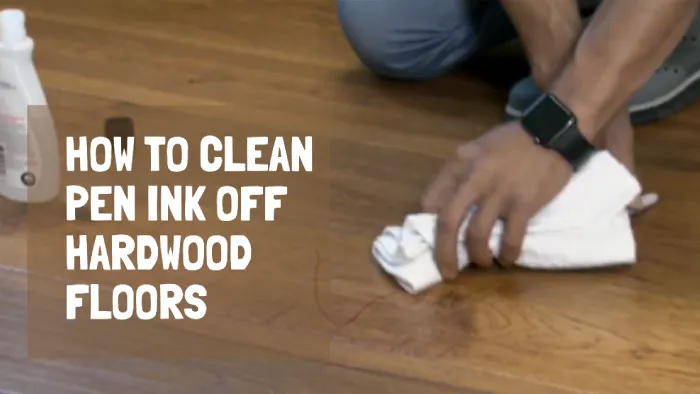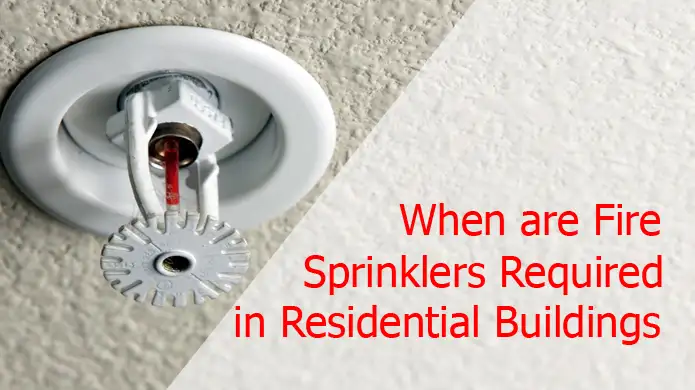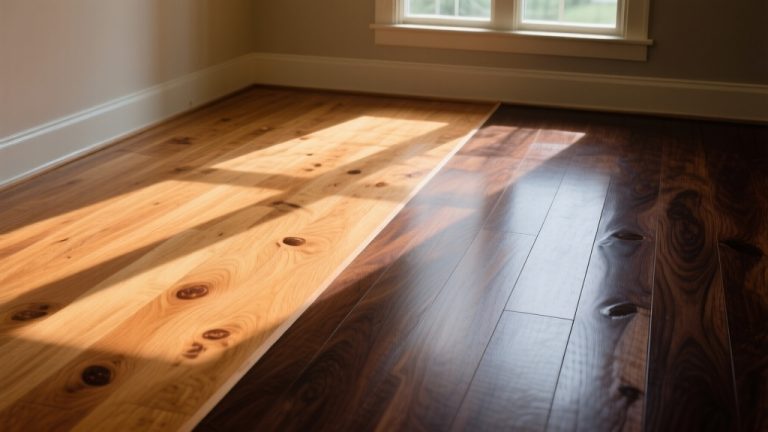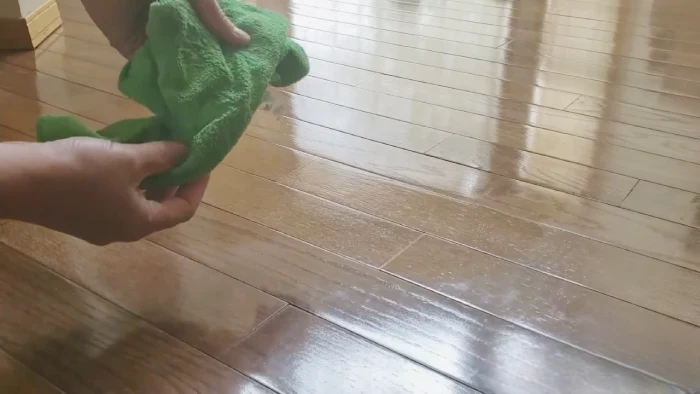To get smell out of wet carpet, start by thoroughly extracting water using a wet/dry vacuum and absorbent towels to prevent mold. Increase airflow with fans and dehumidifiers to speed drying.
Apply baking soda or a baking soda-borax mix to neutralize odors, letting it sit several hours before vacuuming. For stubborn smells, lightly spray a safe vinegar solution to combat mildew.
If odors persist, professional cleaning may be necessary for deep sanitation and preservation. You’ll find all-inclusive strategies for effective odor elimination ahead.
Key Takeaways
- Remove excess water using a wet/dry vacuum and blot with microfiber towels to accelerate drying and prevent mold growth.
- Increase airflow by opening windows and using fans or dehumidifiers to thoroughly dry the carpet and reduce humidity.
- Sprinkle baking soda or a mixture of baking soda and borax evenly on the damp carpet, let sit several hours, then vacuum.
- Use a vinegar-water spray or enzyme-based shampoo for enhanced odor neutralization and deep cleaning.
- Seek professional cleaning if odors persist, mold appears, or the carpet has extensive water damage beyond 48 hours.
Effective Methods to Dry Wet Carpet Quickly
Although drying a wet carpet quickly can be challenging, employing a combination of rapid water removal, enhanced airflow, and humidity control methods will substantially accelerate the process while minimizing the risk of mold and odor development.
Start by using a wet/dry vacuum designed for liquid extraction, making multiple passes to remove as much water as possible without damaging fibers. Be careful not to over-vacuum to avoid fiber damage. Follow with absorbent microfiber towels to blot residual moisture, and always dry thoroughly afterward to prevent moisture-related issues.
Next, maximize airflow by opening windows and doors when weather permits. Deploy oscillating fans or industrial air movers close to the carpet surface to target damp areas evenly. Consistently removing moisture supports proper moisture control and prevents warping or mold growth.
Simultaneously, operate dehumidifiers to reduce ambient humidity, speeding evaporation. Adjust settings to maintain ideal moisture balance and cautiously use space heaters if needed. These combined tactics ensure efficient drying, preventing mold and musty odors.
Using Baking Soda to Neutralize Carpet Odors
Did you know that baking soda can work wonders for your carpets? Its pH-neutralizing properties help to eliminate odors by tackling both acidic and alkaline compounds that can linger in wet carpet fibers. Pretty cool, right? Applying baking soda quickly after a spill is crucial because immediate cleanup helps prevent odors from setting into the fibers.
To get the most out of baking soda, you’ll want to apply a nice thick layer. You can even mix it with a vinegar-water spray for an extra boost! Baking powder is not suitable for odor removal due to its added ingredients, so be sure to use pure baking soda for the best results.
Just make sure to give it enough time to dry before you vacuum it up. This way, you’ll remove any residues effectively.
Oh, and don’t forget about post-treatment cleaning! It’s super important to do this to avoid any abrasive damage and to make sure the odors are fully absorbed. You want to keep your carpet in great shape, after all!
Baking Soda Benefits
Three key advantages make baking soda an indispensable solution for neutralizing carpet odors: its odor absorption capabilities, cost-effectiveness, and safety profile.
When you apply baking soda to your carpet, it absorbs odors from pets, food spills, and dirt. It even tackles greasy stains when combined with borax. For best results, it is recommended to leave the baking soda on the carpet for at least three hours or more to strengthen its odor-neutralizing action.
Using gentle cleaning methods helps protect surfaces, similar to how hardwood floors require careful care to avoid damage from harsh treatments.
- Odor Absorption: Baking soda captures and neutralizes odors without masking them, ensuring a clean, fragrance-free environment.
- Cost-Effectiveness: It’s an inexpensive alternative to costly professional cleaning or chemical deodorizers.
- Safety: Free from toxins and harsh chemicals, it’s safe for families and pets, minimizing health risks while promoting indoor air quality.
These benefits make baking soda a practical, efficient choice for odor management on wet carpets.
Application Techniques
Building on baking soda’s odor-neutralizing properties, applying it correctly guarantees maximum effectiveness in eliminating smells from wet carpets.
Start by vacuuming thoroughly to remove debris and ensuring the carpet is dry or nearly dry for ideal absorption. Baking soda’s mild alkali nature helps break down dirt, grease, and grime embedded in carpet fibers, enhancing the cleaning process.
Proper preparation is crucial because surface preparation significantly influences how well treatments penetrate and work. Use a sifter to distribute 1-2 cups of baking soda evenly over a 10×12 foot area, focusing on odor-prone zones, especially under furniture.
Work the powder gently into fibers with a soft brush to increase contact. Allow the baking soda to dwell for at least 15 minutes; for stubborn odors, leave it overnight (8-12 hours) to penetrate deeply.
For enhanced results, consider mixing essential oils or borax with baking soda before application. Always test a small area first to confirm fiber compatibility.
Post-Treatment Cleaning
Although baking soda effectively neutralizes many carpet odors, thorough post-treatment cleaning is essential to guarantee complete removal of residue and prevent any negative impact on carpet appearance or vacuum performance.
Residual baking soda can dull fibers and strain vacuum motors if left unremoved. To ensure best results:
- Vacuum the treated area slowly and thoroughly, making multiple passes to extract all baking soda particles from the carpet fibers.
- Perform vacuuming promptly after baking soda application to prevent powder from settling too deeply.
- Maintain your vacuum cleaner regularly, as baking soda’s abrasive nature can accelerate wear on vacuum components. Using proper maintenance techniques can extend the life of your vacuum despite abrasive substances.
Because baking soda is non-toxic and safe, it provides an affordable and pet-friendly option for neutralizing odors without introducing harmful chemicals.
Following these steps maintains carpet integrity and vacuum efficiency. This ensures your odor-neutralizing efforts with baking soda provide a clean, fresh environment without unintended side effects.
Applying Vinegar Solution for Odor and Mildew Control
When you apply a vinegar solution to wet carpets, you leverage distilled white vinegar’s acetic acid to neutralize and break down odor-causing alkaline molecules effectively. Mix equal parts white vinegar and water in a spray bottle.
Then lightly mist the affected carpet area, avoiding saturation to prevent excess moisture. Vinegar also acts as a gentle disinfectant, removing bacteria and odors without harsh chemicals.
Let the solution sit for 30 minutes to several hours to neutralize odors and eliminate bacteria responsible for mildew and pet smells. Sprinkler systems, by contrast, activate only in response to specific heat thresholds, ensuring targeted suppression rather than indiscriminate wetting.
Afterward, blot with a clean, dry cloth and allow the carpet to air dry thoroughly. For persistent odors, repeat the process or enhance deodorization by combining vinegar with baking soda.
Always spot-test first to guarantee fiber safety and use only clear white vinegar to avoid staining, especially on delicate or natural fibers.
Borax as a Natural Alternative for Odor Removal
If you’re looking for a natural and effective way to remove odors from wet carpets, borax offers a powerful alternative to synthetic deodorizers. This mineral compound absorbs both moisture and unpleasant smells, working well alone or combined with baking soda for enhanced effect.
Here’s how to use it:
- Mix one cup baking soda with half a cup borax to create a potent deodorizing powder.
- Sprinkle the mixture evenly over the damp carpet, allowing it to sit several hours for deep moisture and odor absorption. Proper moisture control is essential to prevent lingering damp smells and potential mildew.
- Vacuum thoroughly, repeating as needed to eliminate all powder residue and trapped odors.
This method suits various carpet types, including those affected by pet urine. It is also a quick, inexpensive refresher for carpets when combined with baking soda, making it a versatile choice for many households.
You can also add essential oils for a natural fragrance boost without synthetic chemicals.
Carpet Shampooing Techniques for Deep Cleaning
Since deep cleaning requires more than surface treatment, mastering carpet shampooing techniques guarantees you remove embedded dirt and odors effectively.
Start by vacuuming thoroughly and pre-treating high-traffic or stained areas with diluted shampoo. It is essential to remove dust and debris beforehand to prevent damage and improve cleaning results.
Use manufacturer-recommended shampoo mixed with warm water, using enzyme-based for organic stains or oxygenated for general soil. These shampoos contain surfactants that break down grease and dirt, enhancing cleaning efficiency.
Apply shampoo evenly in small sections, agitating gently with a soft brush or a carpet shampoo machine’s rotating brushes to break up grime without damaging fibers.
After dwelling briefly, rinse thoroughly using warm water to remove residues, performing multiple extraction passes to avoid stickiness and oversaturation. Dry carpets in a well-ventilated area for at least six hours.
Regular maintenance with proper shampooing and vacuuming guarantees lasting freshness and odor control in your carpet.
When to Consider Professional Carpet Cleaning Services?
Although many odor issues can be resolved with thorough home cleaning, persistent smells that resist drying or surface treatments signal the need for professional carpet cleaning services.
You should consider professionals when:
- Lingering musty odors persist after ventilation and surface cleaning, or visible mold appears, indicating health risks from bacteria and allergens. Using low-VOC cleaning solutions can help maintain indoor air quality during remediation.
- Water damage is extensive, with carpet soaked beyond 48 hours, affecting padding or subfloor, raising concerns about structural damage and deep-set contaminants.
- Your carpet is made of delicate fibers like wool or silk, has thick padding, or the manufacturer requires professional maintenance to preserve warranties.
Engaging experts guarantees thorough decontamination and odor removal while mitigating long-term health risks. It also extends carpet lifespan cost-effectively by removing harmful buildup and protecting office assets against premature wear and tear through advanced cleaning technology asset protection.
Frequently Asked Questions
Can Wet Carpet Odors Cause Health Problems?
Yes, wet carpet odors can cause health problems. When carpets stay damp, they foster mold and microbial growth, releasing allergens, spores, and microbial volatile organic compounds (mVOCs).
You might experience respiratory issues like coughing, wheezing, or asthma exacerbation.
Additionally, exposure can trigger eye irritation, skin reactions, and headaches. You must address wet carpet odors promptly to prevent these health risks and maintain safe indoor air quality.
How Long Does Wet Carpet Need to Dry Completely?
You’ll need between 12 hours to five days for your wet carpet to dry completely, depending on severity. Partially wet carpets dry faster, around 12 to 24 hours, while flooded ones can take three to five days.
Using professional equipment like wet-dry vacuums, dehumidifiers, and heaters can reduce drying time to as little as three to 12 hours. Monitor your carpet for dampness, musty smells, or dark spots to guarantee full drying.
What Household Items Should Be Avoided on Wet Carpet?
You should dodge household items like bleach, ammonia, and harsh alkaline cleaners. They can corrode fibers and fade colors like acid rain on stone. Avoid oil-based cleaners and scented sprays, as they leave residues that trap odors and moisture.
Steer clear of baking soda without thorough vacuuming and alcohol-based products that dry out fibers. Also, don’t place rugs, furniture, or plastic covers on wet carpets, as they trap moisture and delay drying, promoting mold growth.
Are There Specific Carpet Types More Prone to Odor Retention?
Yes, you’ll find nylon carpets more prone to odor retention since they absorb moisture up to 5%. This encourages bacterial growth if not dried quickly.
Wool resists odors better due to its natural moisture repellency. Olefin fibers resist moisture and odors effectively. Carpets with moisture-blocking backings and antimicrobial treatments also reduce odor risk.
Can Pets Worsen Wet Carpet Odors or Damage?
Yes, pets can substantially worsen wet carpet odors and damage. Their urine penetrates deep into fibers, padding, and subfloor, leaving ammonia salts that intensify odors when reactivated by moisture.
This contamination encourages mold growth and fiber degradation, compromising indoor air quality and carpet integrity. You need prompt, thorough cleaning with enzyme-based products and professional extraction to neutralize odors and prevent lasting structural damage caused by pet urine saturation.
Stop Mold Before It Starts: Act Fast With Expert-Approved Methods
Now that you know the key methods to dry your wet carpet and tackle stubborn odors from baking soda to professional cleaning, you might think the problem’s solved. But what if hidden moisture lingers beneath the surface, inviting mold and lasting damage?
Don’t wait for that silent threat to escalate. Act decisively with these proven techniques to restore your carpet’s freshness and integrity before it’s too late. Your carpet’s health depends on it.






